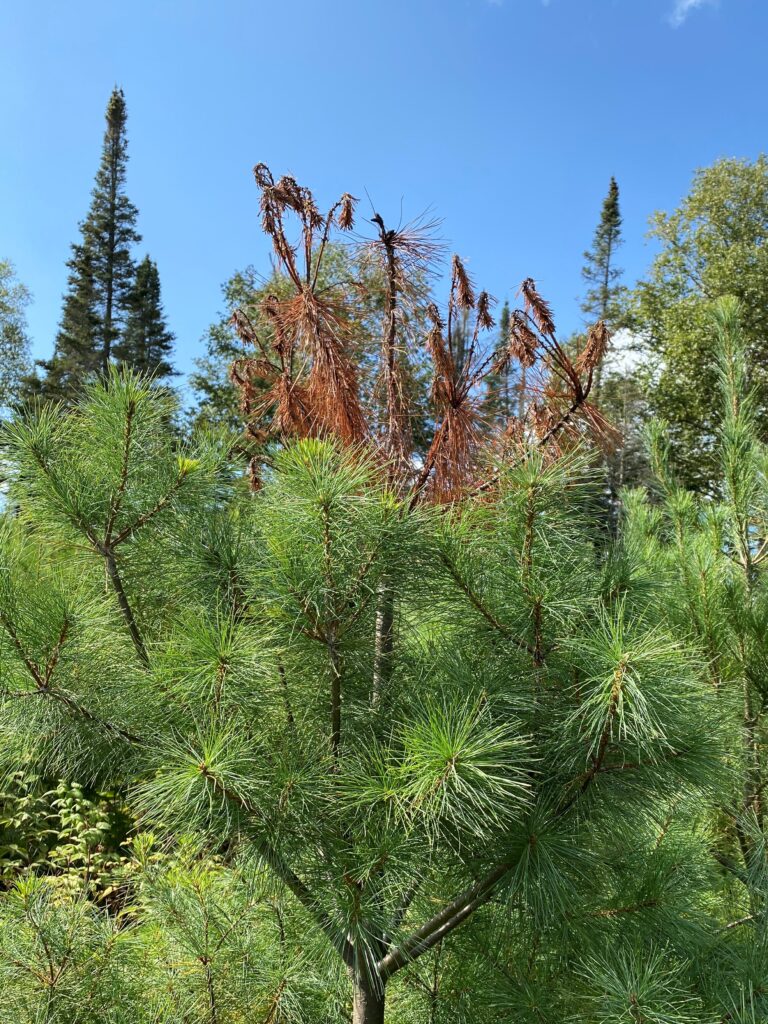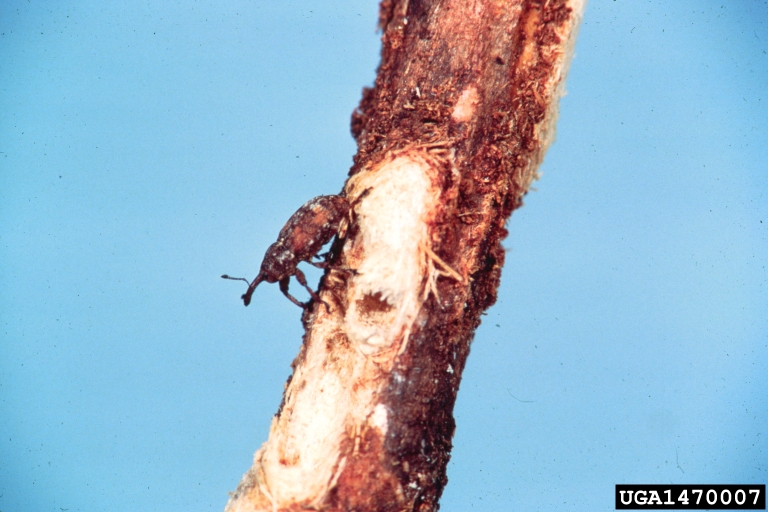Article By: Linda Williams, DNR Forest Health Specialist, Woodruff
Linda.Williams@wisconsin.gov or 920-360-0665
Tree damage from white pine weevil is noticeable across Wisconsin this time of year. White pine weevils attack several different Wisconsin species, including eastern white pine, jack pine and spruce.
Adult weevils lay their eggs on terminal leaders in the spring. After the eggs hatch, larvae bore into the terminal and begin feeding downwards just under the bark which can result in the killing of a 1 to 2-feet section of the terminal leader as they feed. Terminal leaders will often have a wilted or “shepherds crook” appearance, and they will turn rusty red to brown late in the fall season. These dead terminal leaders will often break off during the winter.

Dead terminal leader caused by a white pine weevil attack on a young white pine.
Photo Credit: Wisconsin DNR
White pine weevils prefer young, open-grown trees with stout leaders. When the terminal leader dies from the insect’s attack, a lateral branch will grow upwards, taking over apical dominance. When this occurs, there is often a noticeable crook in the main stem of the tree.

White pine weevil on a tree
Photo Credit: A. Steven Munson, USDA Forest Service
Natural controls for white pine weevil include parasitic wasps, pitch drowning by the tree and winter mortality of adults. Common silviculture practices used to minimize damage from this insect include regenerating pine in the understory and planting at high densities. The first option causes pines to grow more rapidly upwards, resulting in thinner terminal leaders, which are less desirable to the weevils. The second option of planting pines at high densities causes the trees to grow rapidly as they attempt to out-compete neighbors for sunlight, resulting in thinner terminal leaders as the trees redirect their resources into rapid upward growth. These management options will minimize the stem’s crooking when a lateral branch takes over apical dominance, as the lateral branch will grow more upright to try to reach the light. Lastly, chemical controls can be utilized to control adult white pine weevil if damage is significant.
